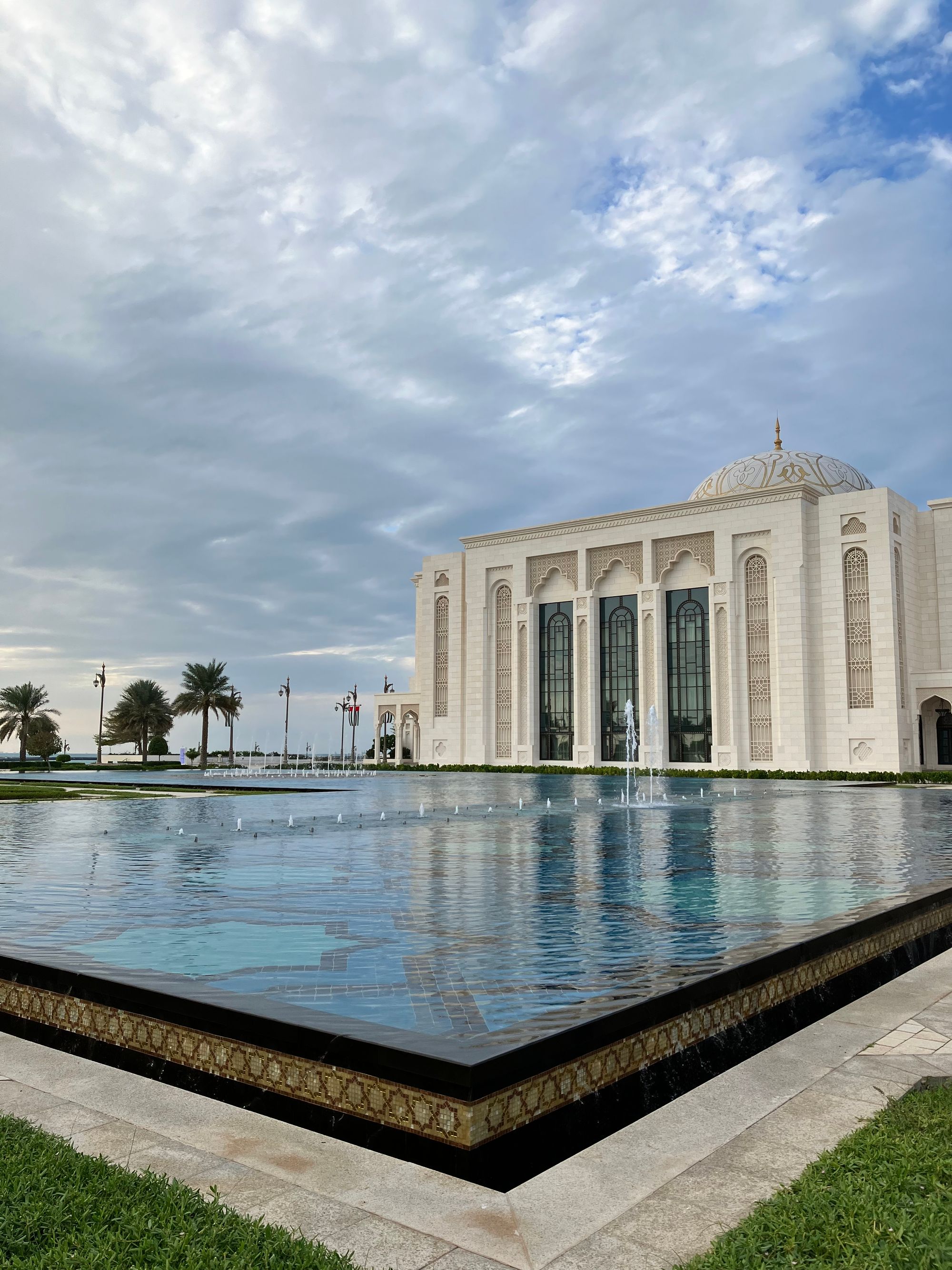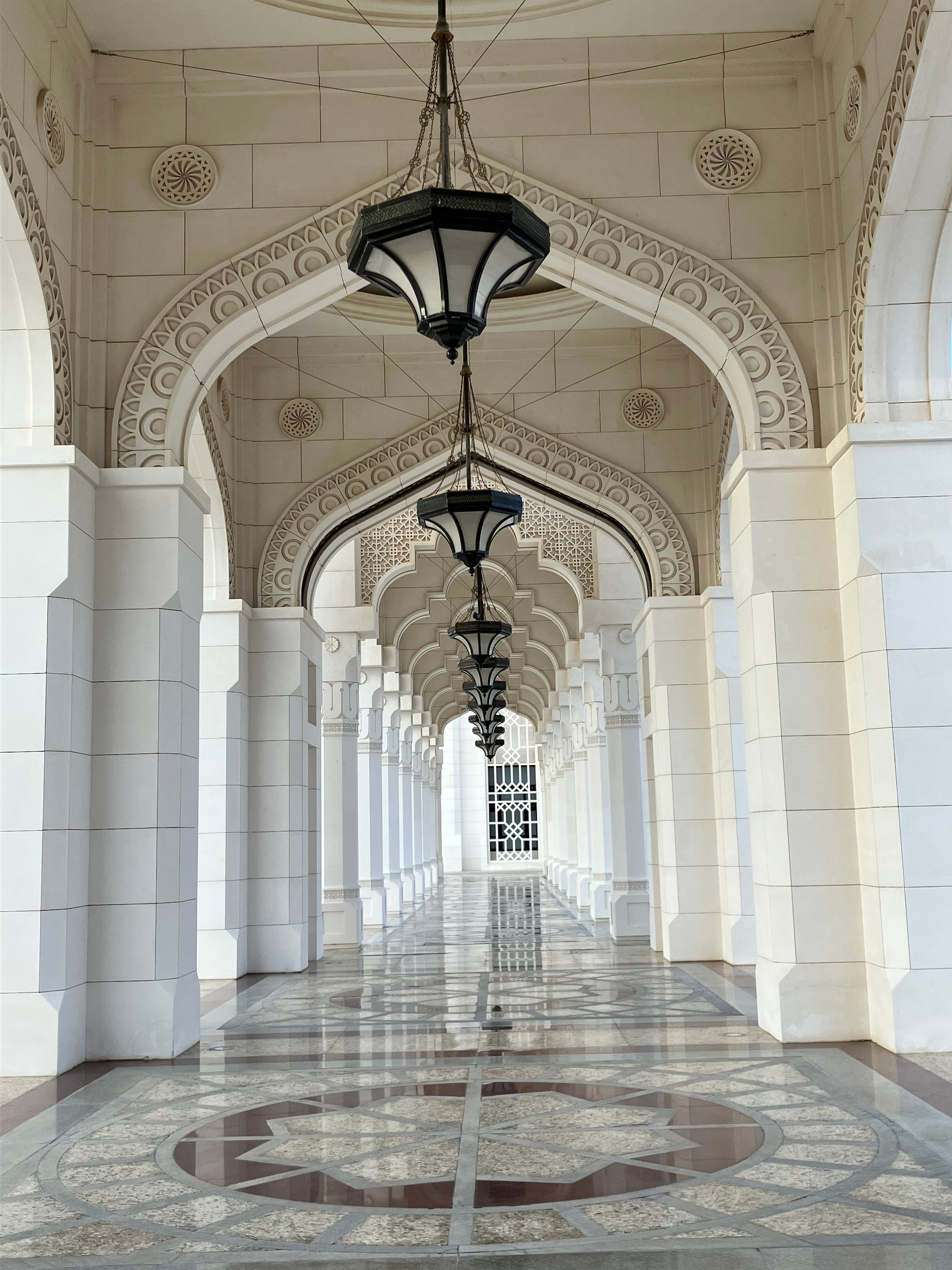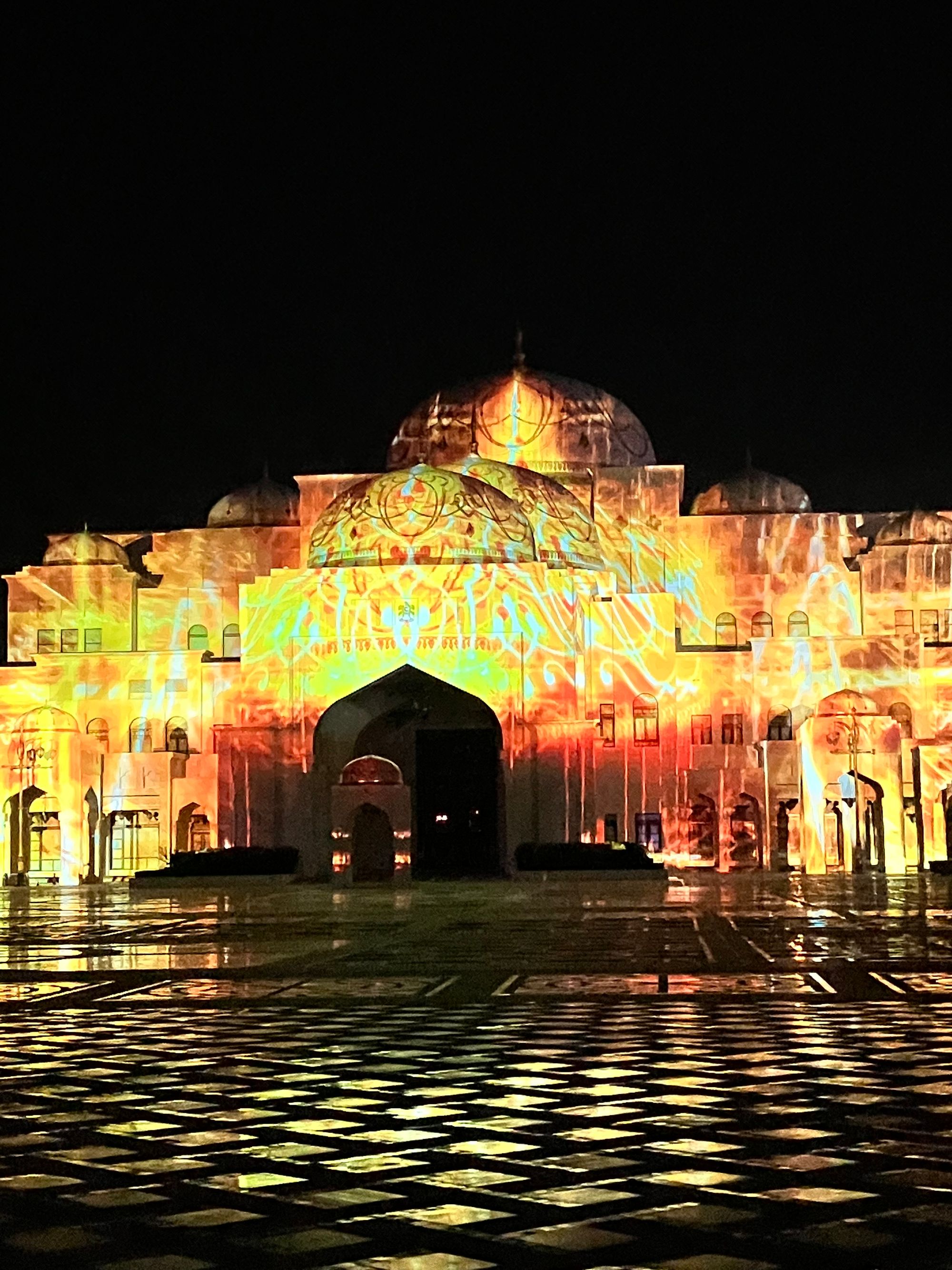Abu Dhabi Travelogue
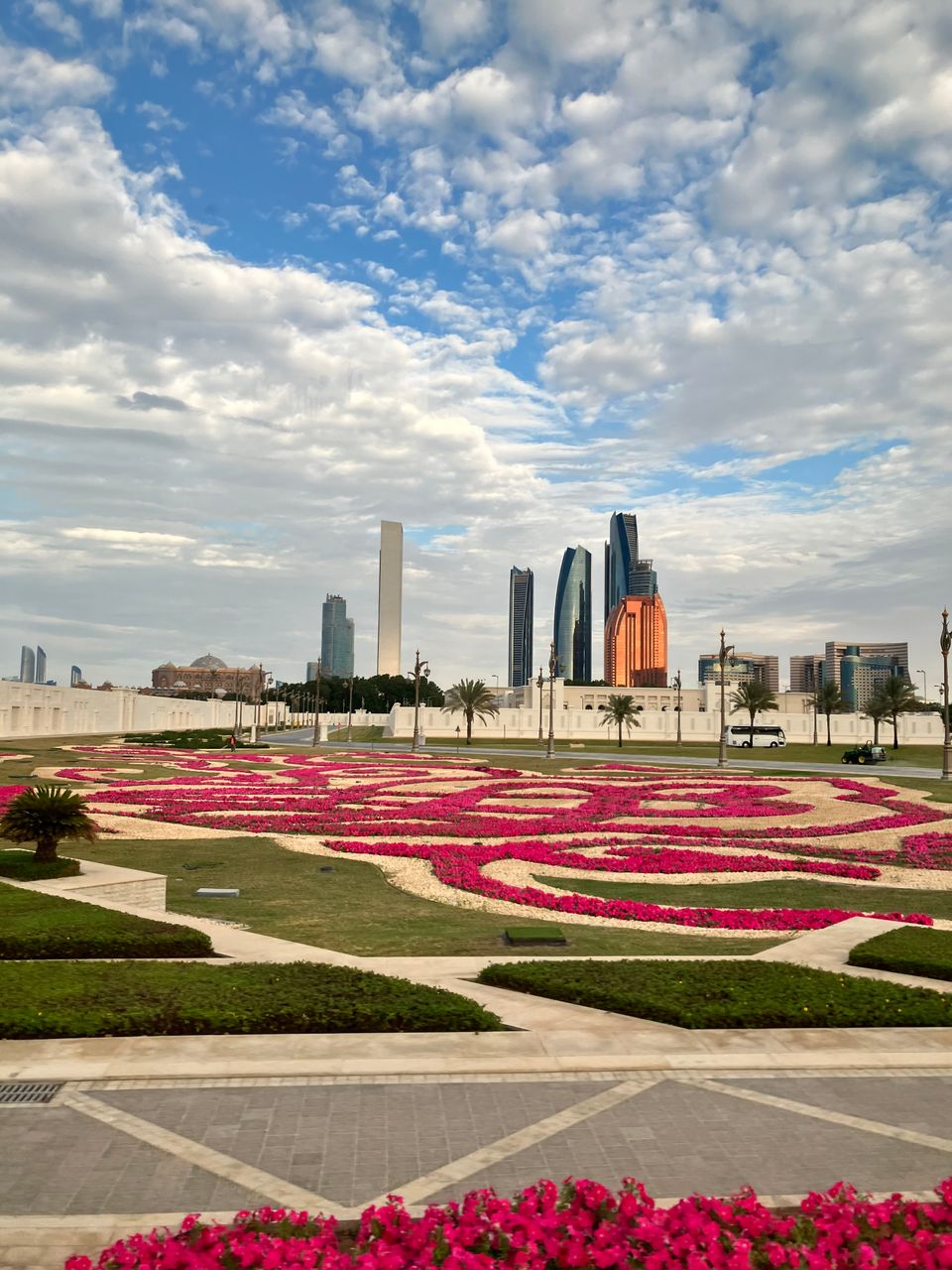
The quiet capital of the Emirates, Abu Dhabi is more serious and more conservative than Dubai, but with a lot of attractions that make dressing in an abaya and wearing a shawl over your head, a small price to pay for being able to see the splendour of the East at its best. After getting giddy with excitement in luxurious hotels and shopping malls in Dubai, we went to Abu Dhabi not to have more of the same, but to soak up the sights of cultural value. And on that list, Sheikh Zayed's Grand Mosque is an unmissable sight.
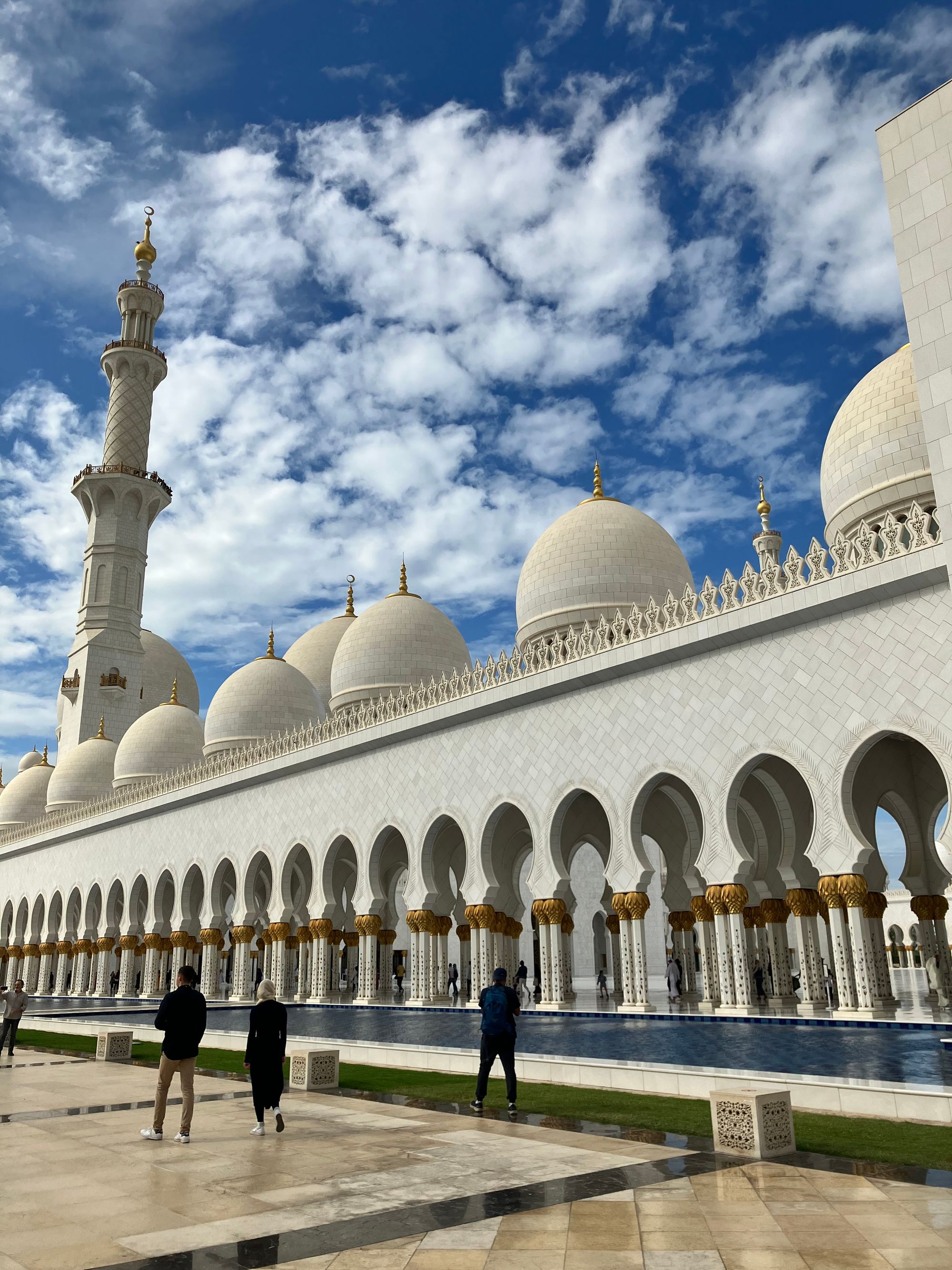
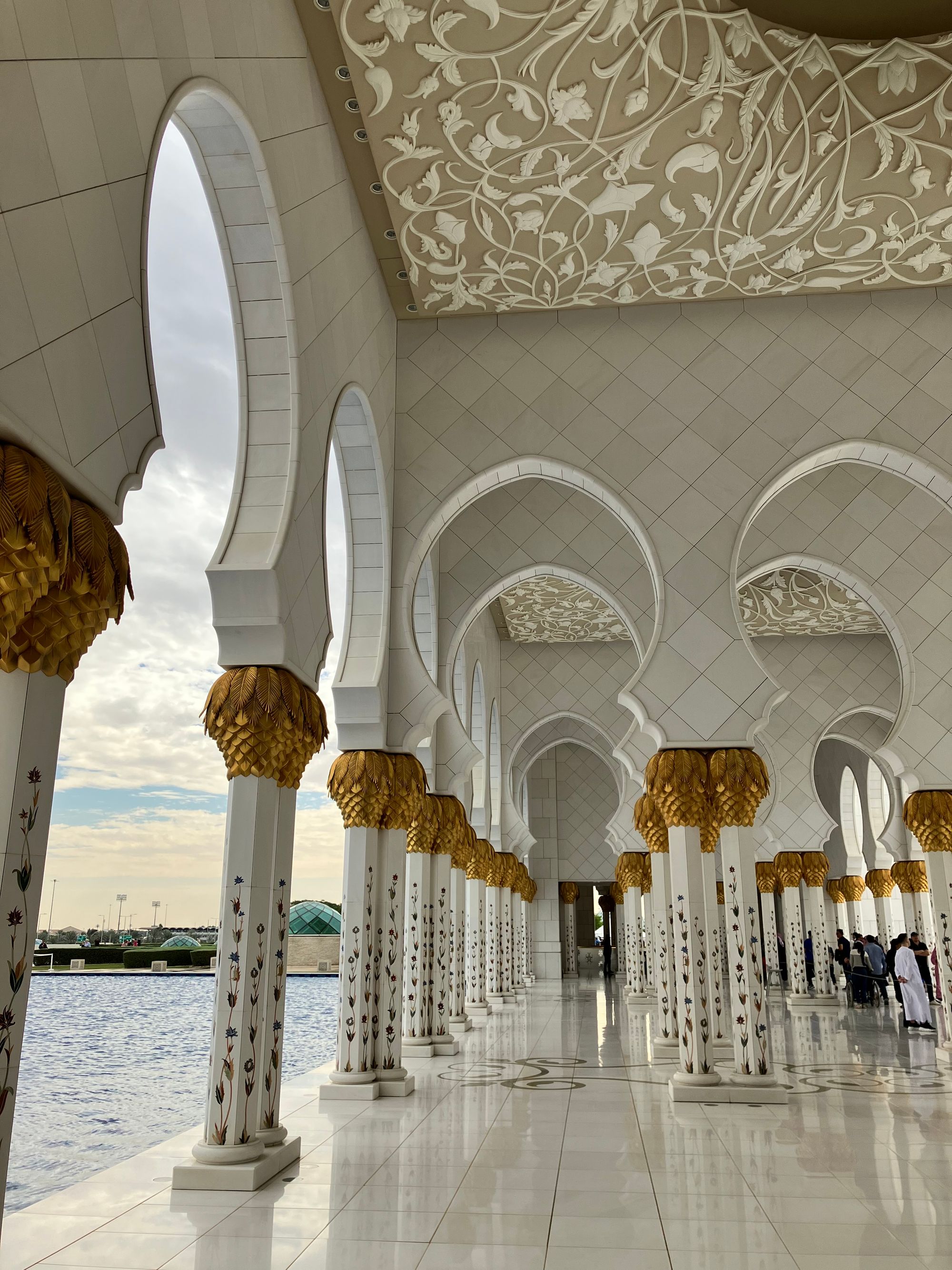
They are strict with the rules inside the mosque, the women need to be completely covered, and any hand gestures or inappropriate posing for pictures are forbidden as well. But I found it all worth it because the inside of the mosque is opulent, majestic, imperial, and utterly magical to see. Despite its undeniable beauty, there's more than meets the eye in the architecture of the building: hidden meaning and purpose. For example, the night illumination of the mosque, is intended to mimic the moon’s various phases, and in synchrony with the domes and towers of the structure, it depicts the way the moon changes shape and emits a different light each night. Â
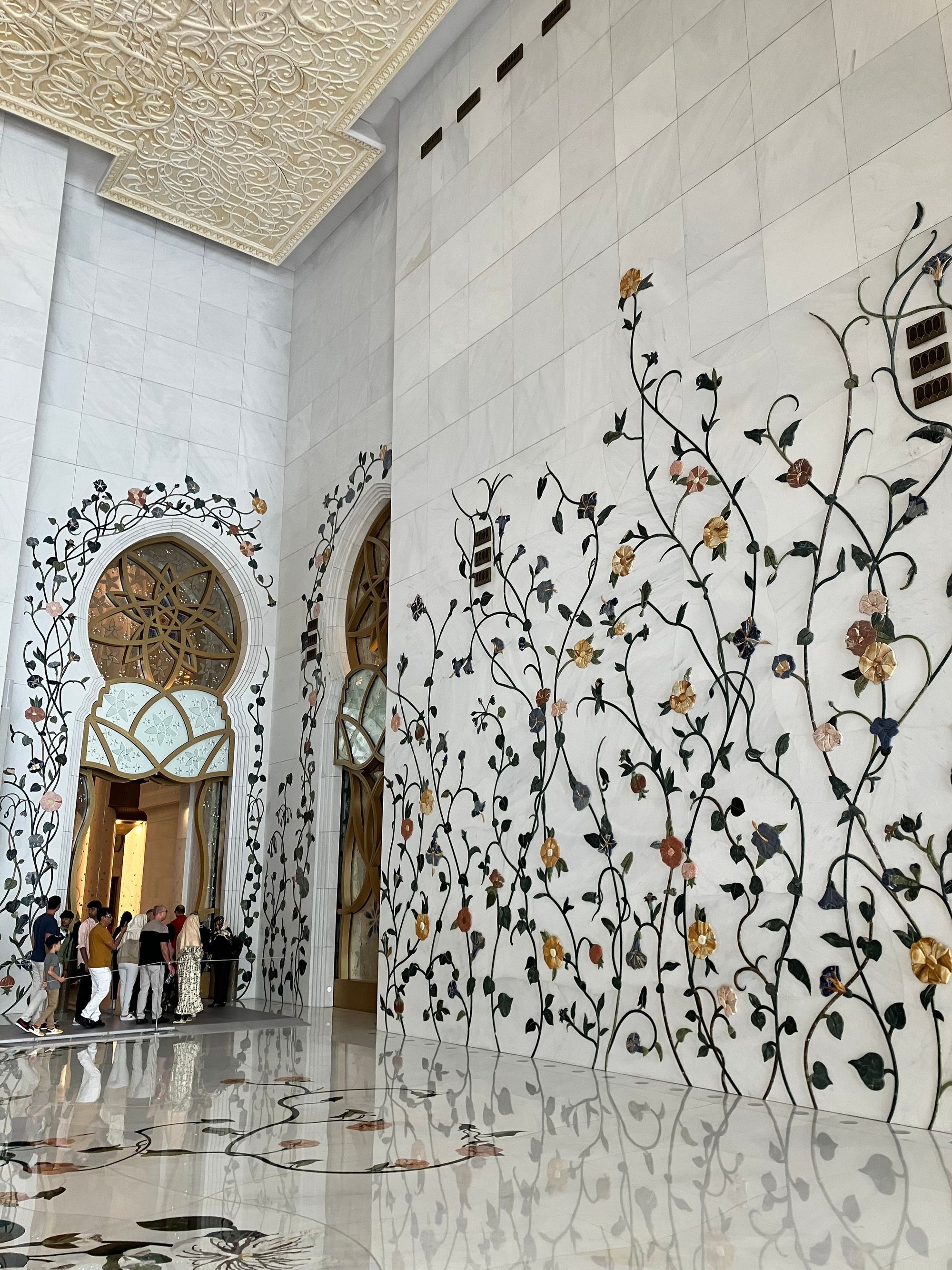
Beautifully symmetric, all clad in radiant white marble, and lavishly dazzled with gold, and gleaming Swarovski crystal chandeliers, the building is a huge attraction of the Islamic world, and justifiably so. Despite the crowds, the mosque is truly a sacred, respected place and the peace and quiet that everyone observes are refreshing for the senses. There are male and female prayer sections inside, for the sake of propriety, but I have found them to be almost equal in size and beauty, with geometrical elements used for decoration repeating themselves and giving you the sensation that you are going in circles and seeing the same space all over again. Very disoriental.
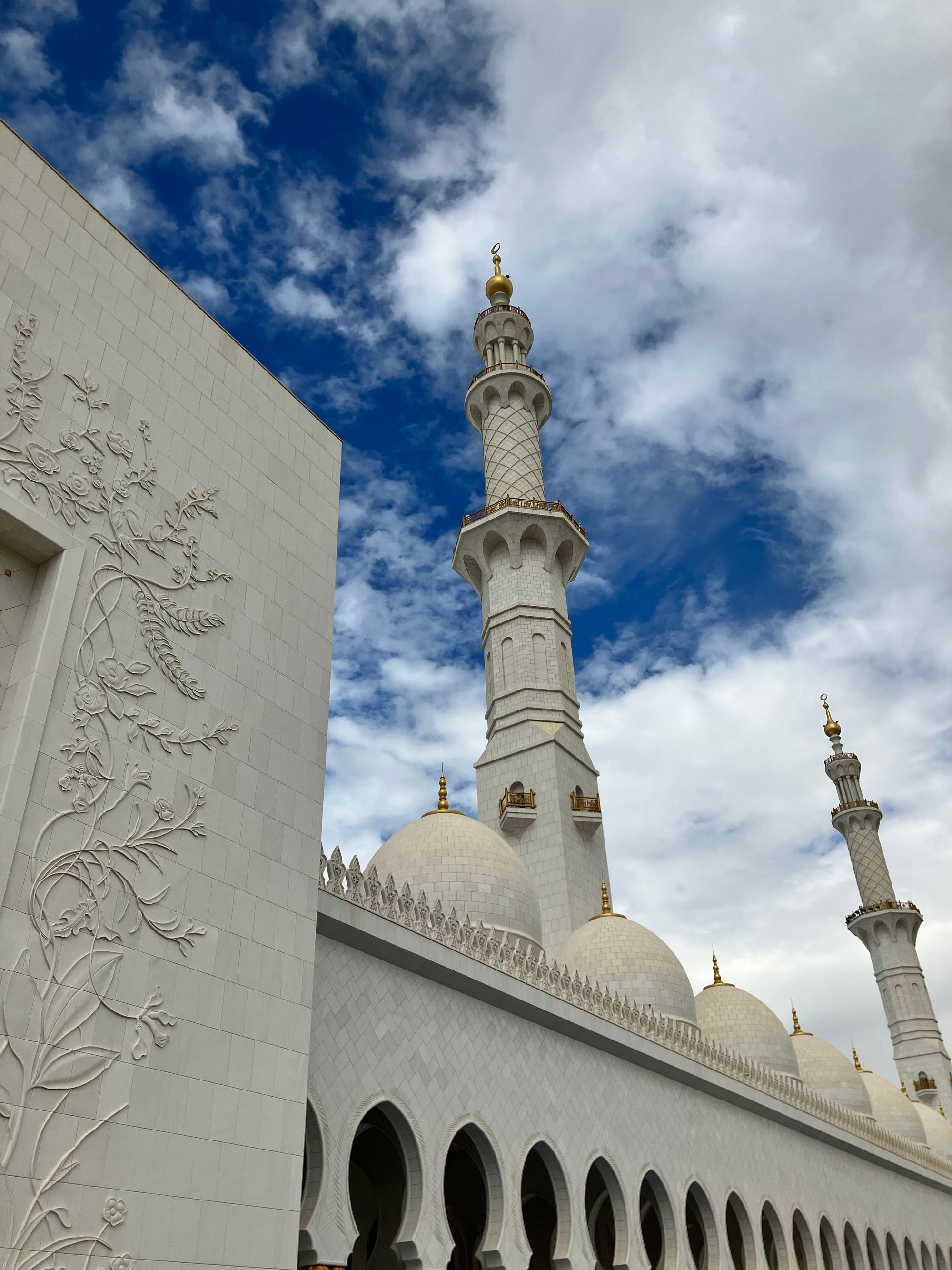
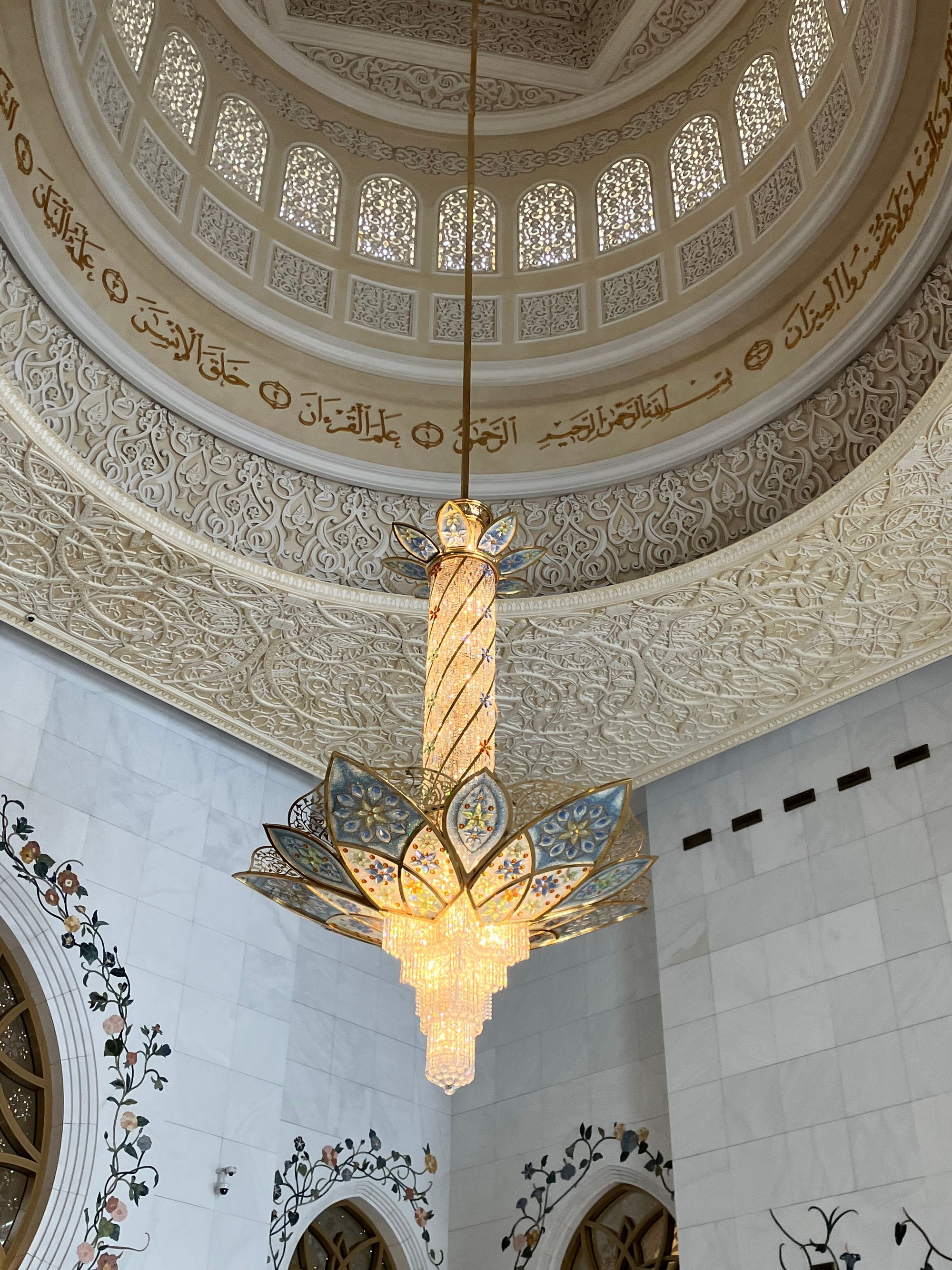
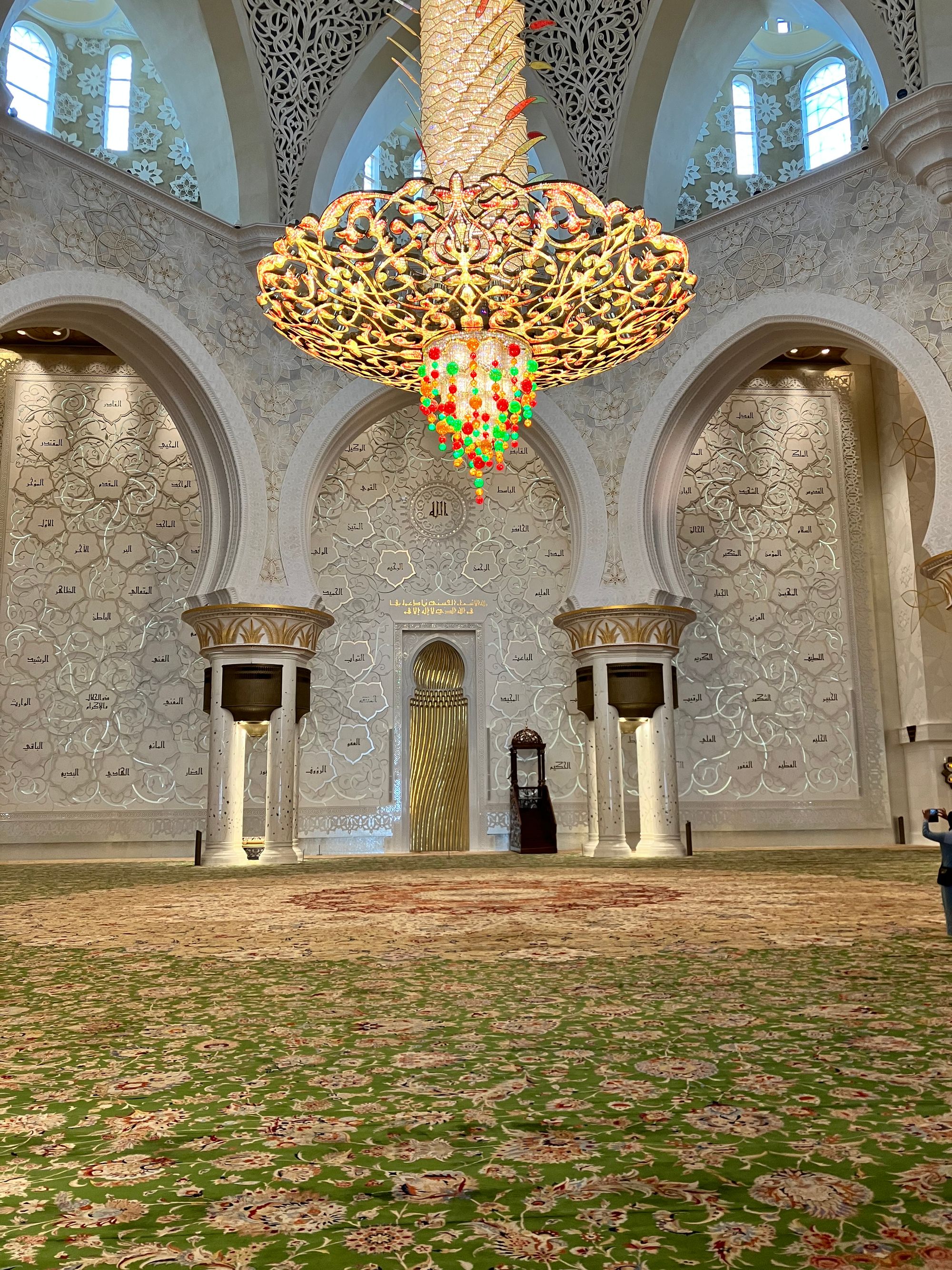
The jewel in the crown of Abu Dhabi, or arguably of the whole country, would definitely be their Presidential Palace or Qasr Al Watan. Forget all you ever knew or presumed about the places where a president might reside. This is something straight out of Arabian Nights' wild tales of wizards, flying carpets, and caves filled with gems and unfathomable treasures. I dare a visiting president of some other country to not feel small when in an official visit. Because bigger, more luxurious, and more majestic than this can hardly exist.
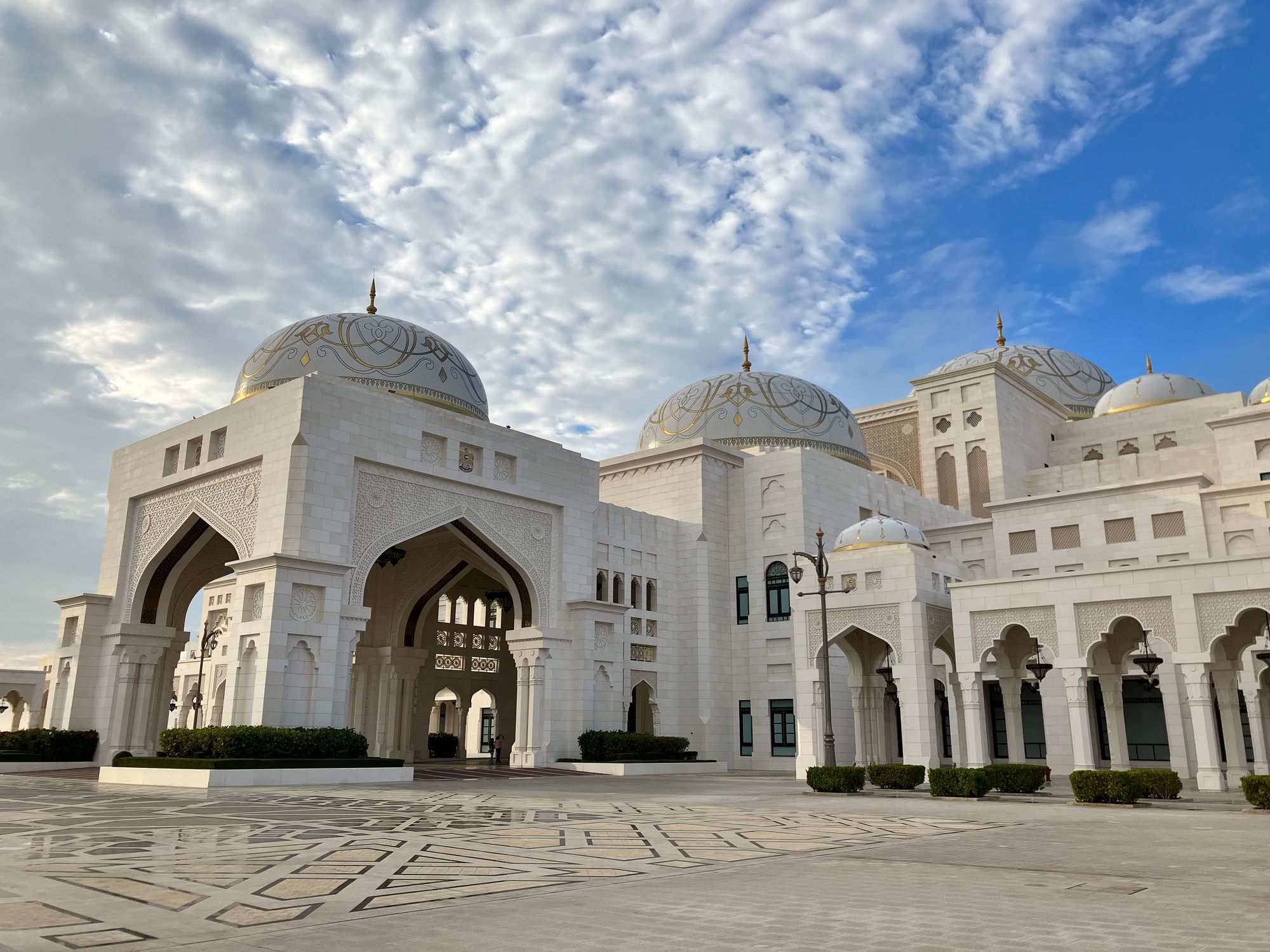
The inside of the palace is covered with precious gilded mosaics, Arabic calligraphy, and myriads of intricate details and patterns that have roots in Islamic art. The walls are heavily decorated with geometric shapes and floral motifs due to obligatory avoidance to represent living beings. The Islamic culture and religion hold the belief that the creation of living forms is unique to God, and it is for this reason that the role of images has been controversial, despite the fact that the Qur'an does not explicitly forbid human figures from being represented. This is a complex and fascinating topic belonging to the history of art and it was interesting to see it embodied in here.
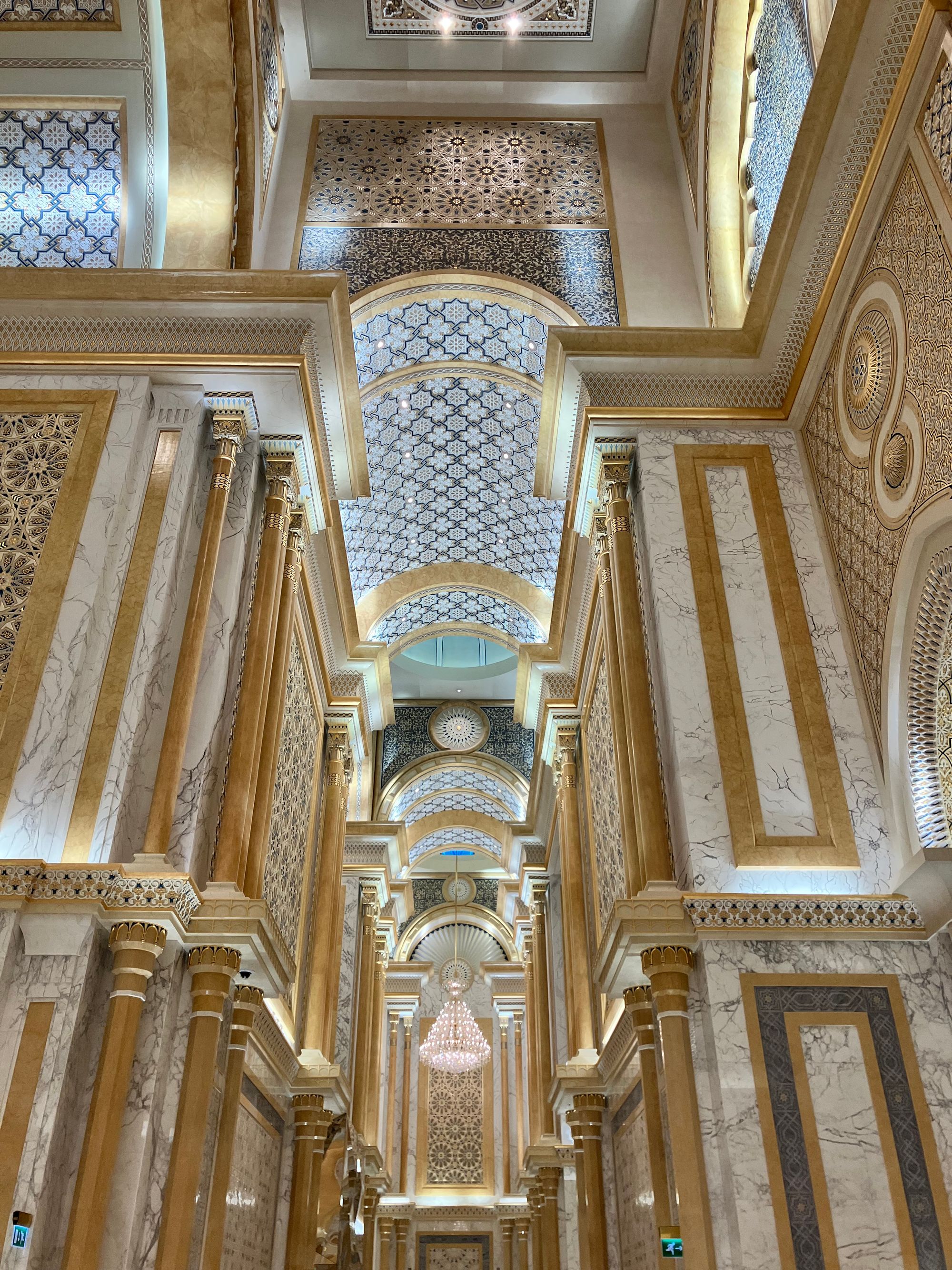
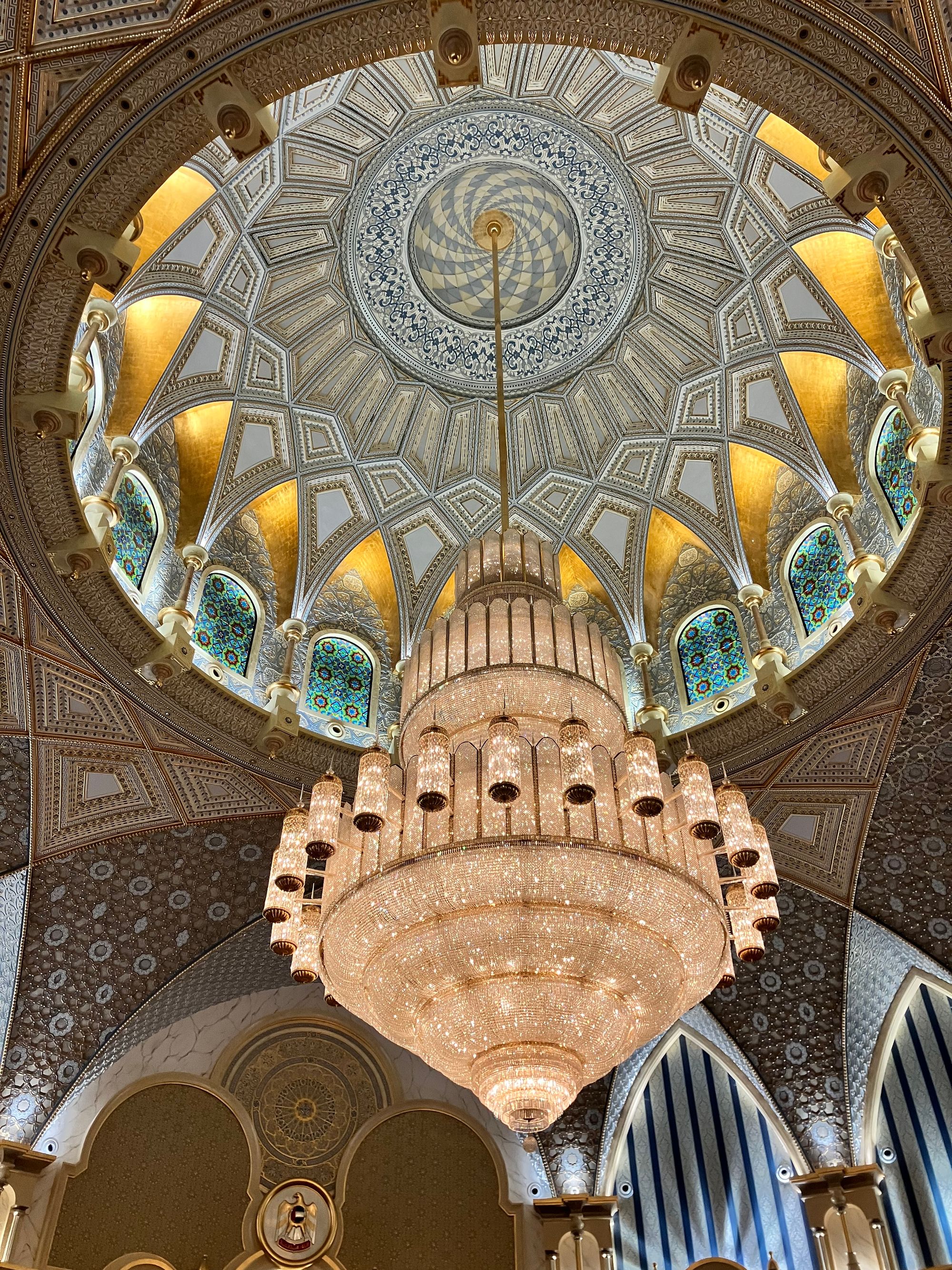
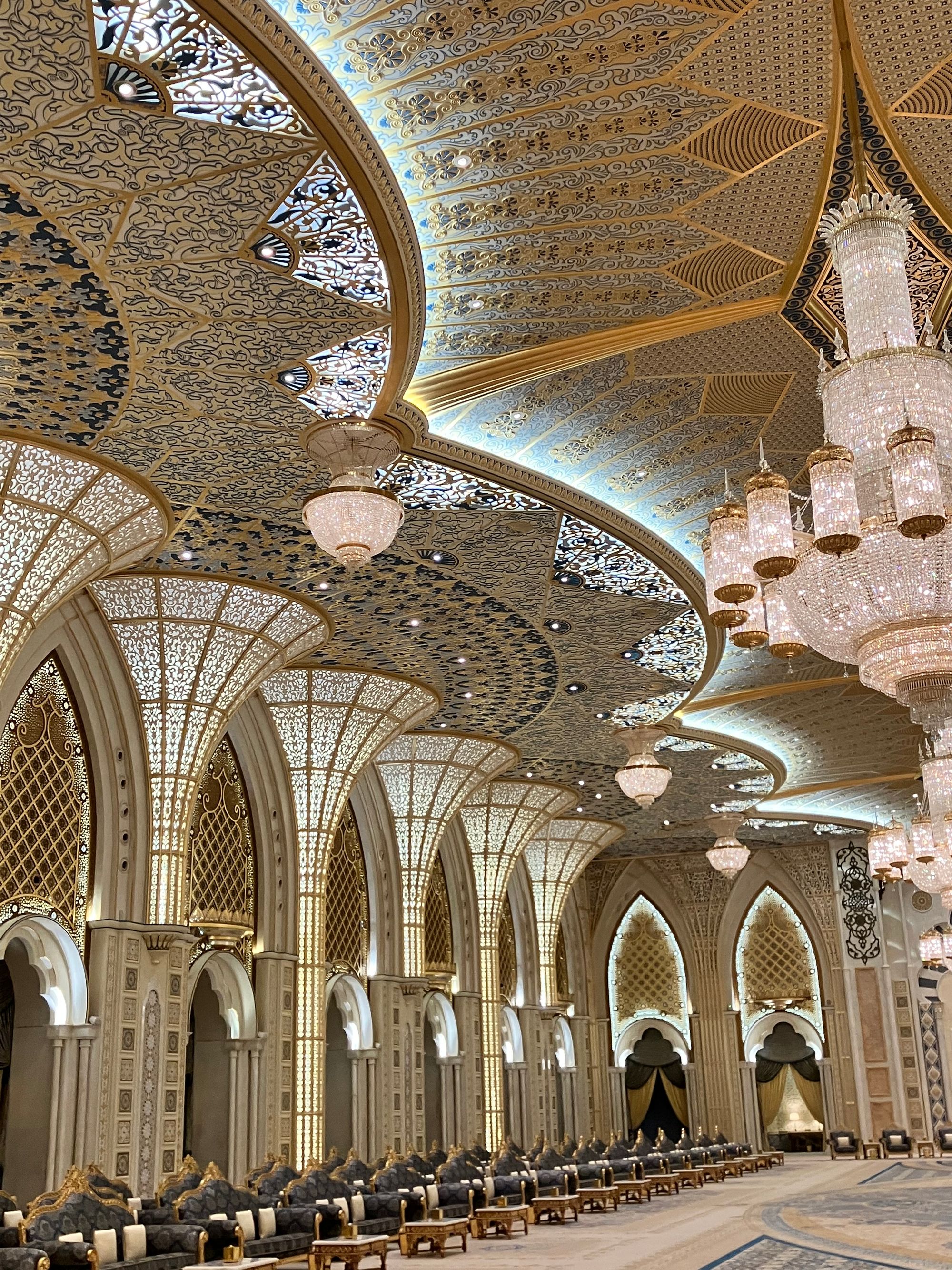
The debt that the whole world owes to the knowledge that arrived from the East, is a topic that the Presidential Palace takes very seriously. I am superficial enough to admire all the glitz and bling, but the exhibition that outlines the development of the Eastern thought and philosophy and how deeply ingrained Islamic contribution to the world is, left a lasting impression on me.
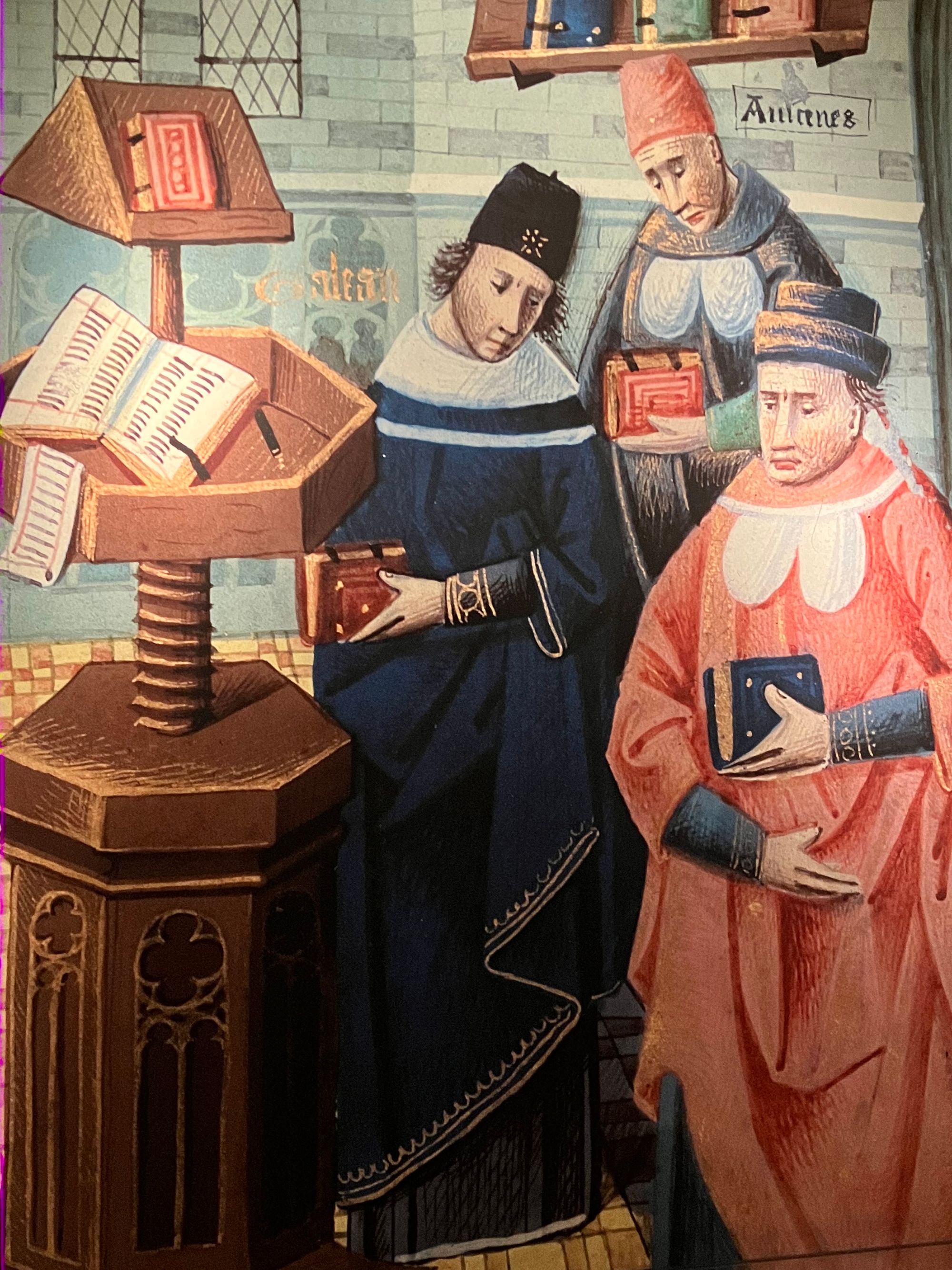
We all know about Marco Polo, but do we know about his equally adventurous Islamic counterpart, Ibn Battuta? Are we aware that the philosopher Averroes, one of the most distinguished connoisseurs of Aristotle ever, who integrated philosophy and religion, is actually called Ibn Rushd? Arabs developed knowledge that inspired European Renaissance thinkers, built the foundations in mathematical, medical, and astronomical sciences, introduced agricultural and maritime techniques, and invented the modern university system. To say the least.
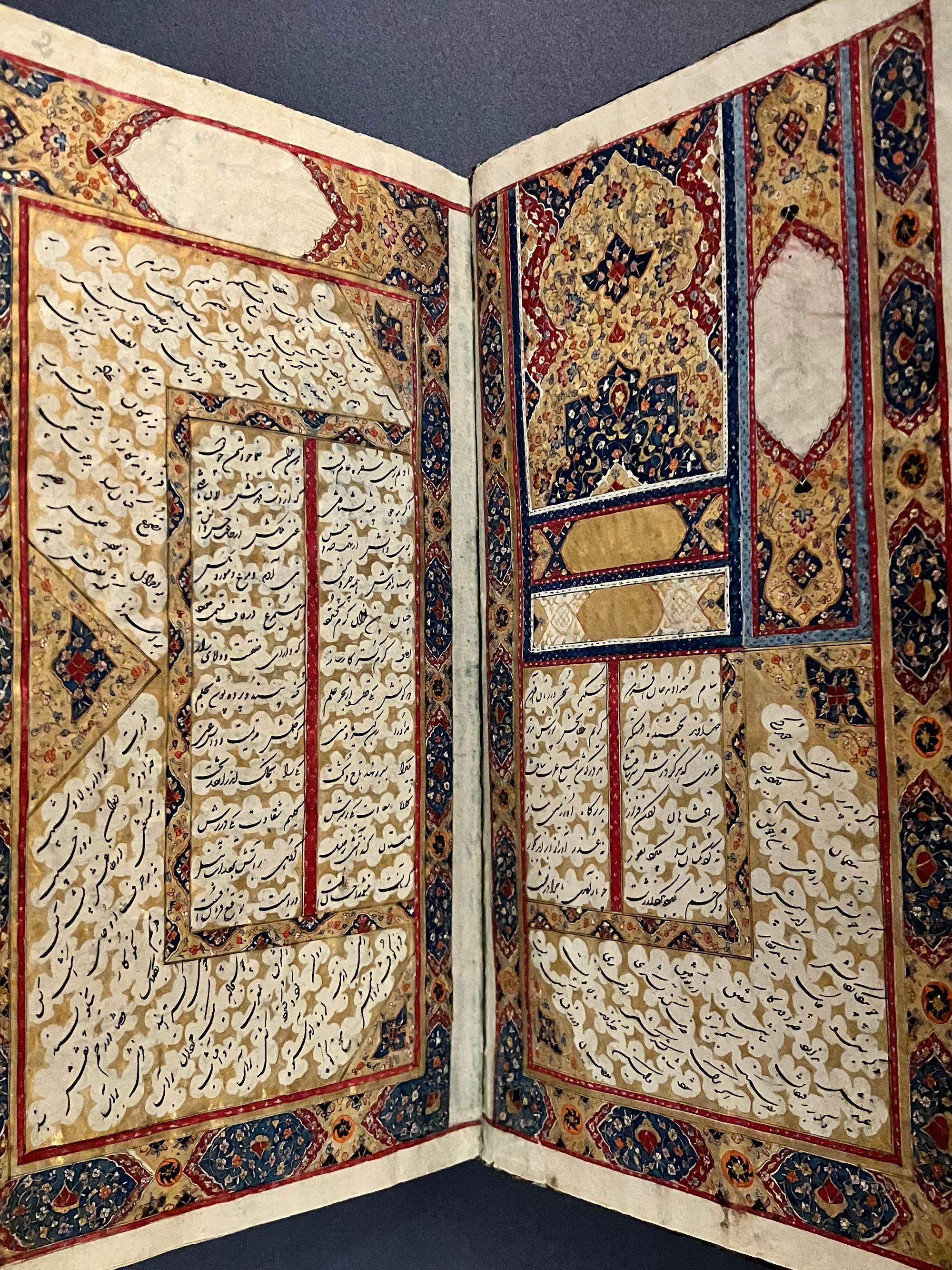
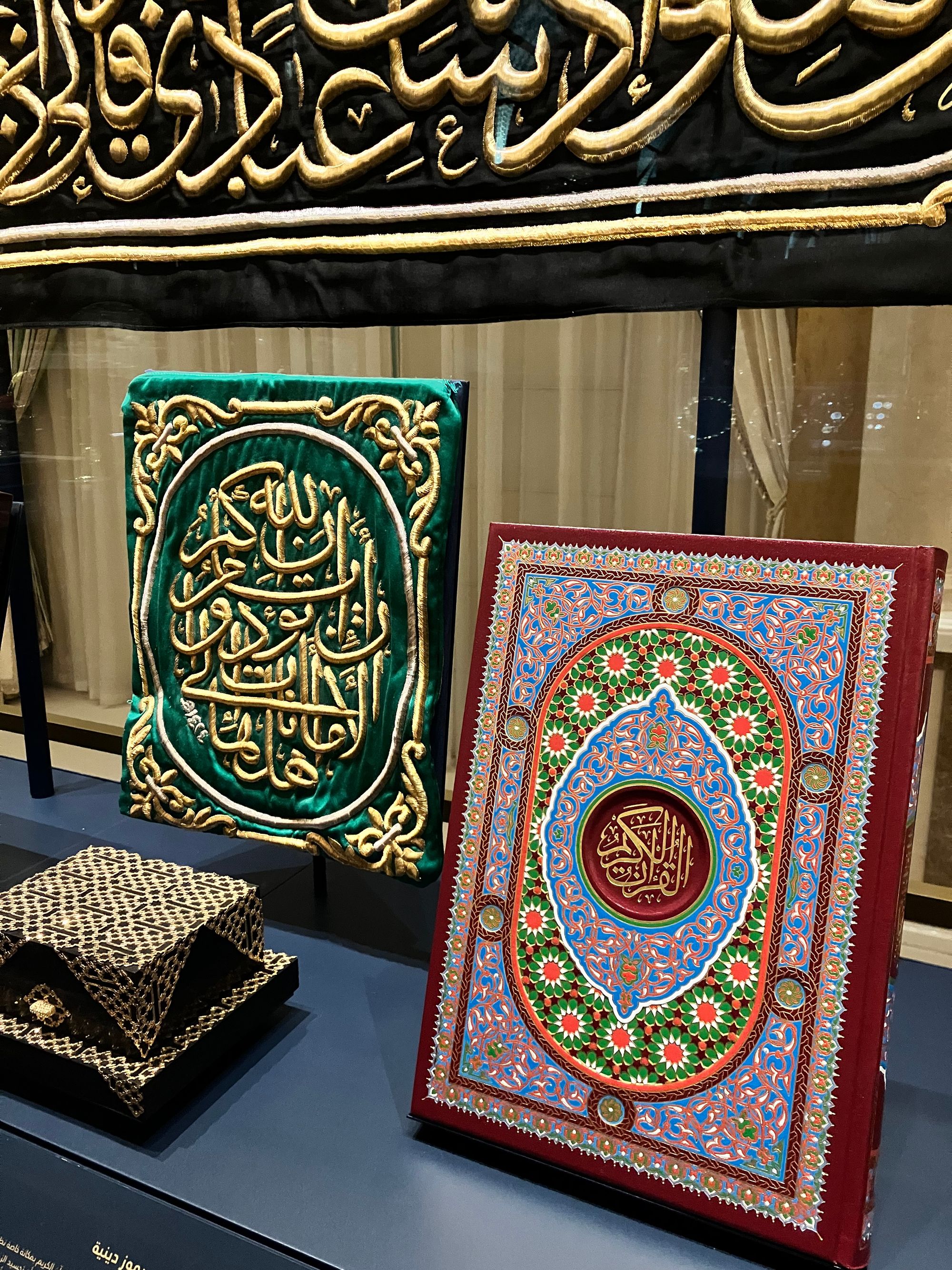
This is a prickly issue indeed, and it is an indelible part of human condition to categorize and generalize, belittle even, in a futile attempt to understand and control the world and all the unexpected, unknown, strange and conflicting occurrences in it. Thus, the East is often instinctively aligned with the negative denominators such as chaos, poverty, war, terrorism, and religious fundamentalism. I pride myself on not internalizing such prejudices, but even so, I needed this refresher that East is in fact something far more profound than any politics or propaganda might claim.
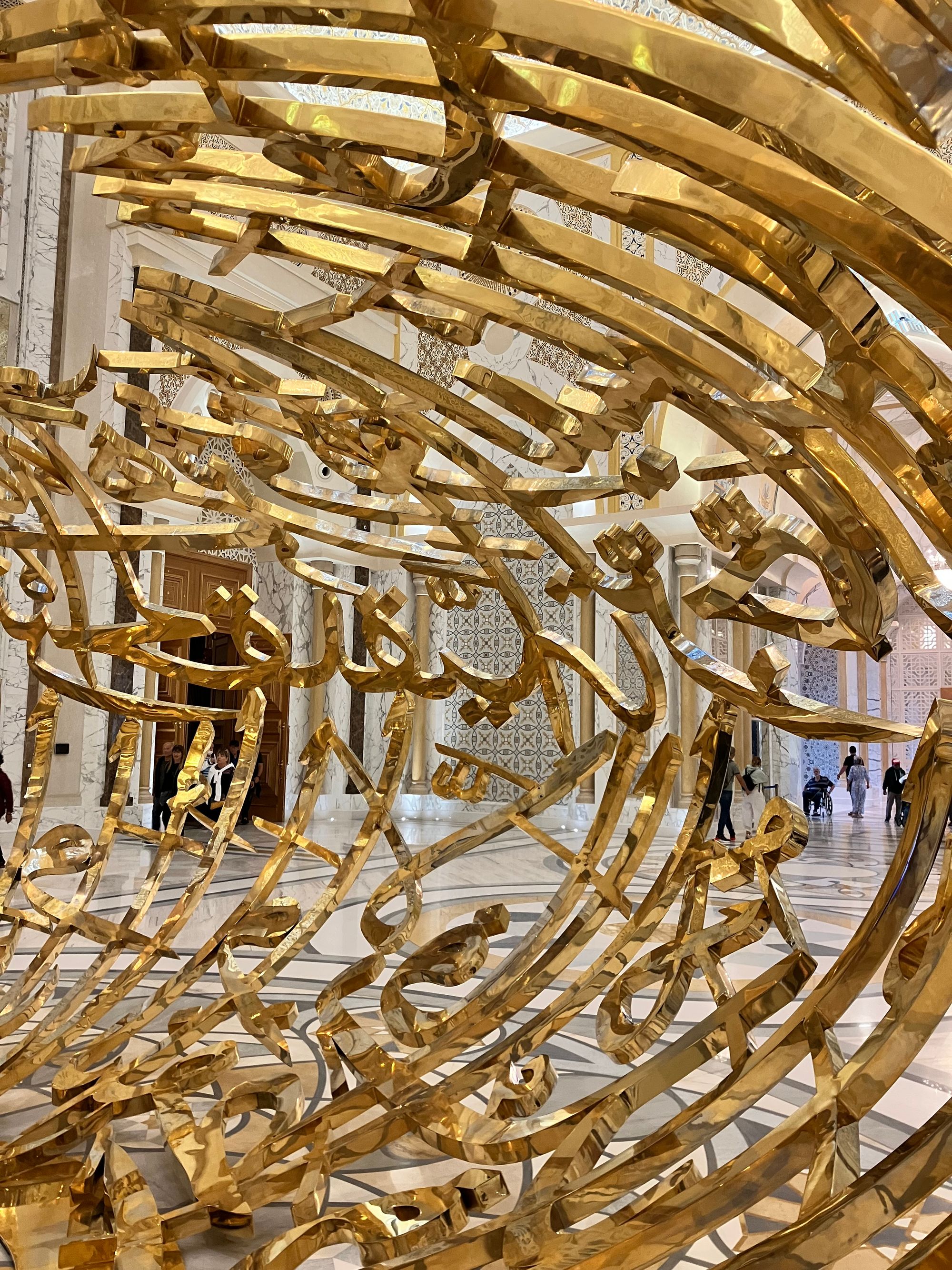
The gardens of the Palace are an attraction in itself, and the culmination of the experience takes place every evening at 7 pm when the whole stunning building becomes the canvas for a light show which narrates the history of the unification of the Emirates, which happened in 1971. The rulers (emirs) of the six regions: Abu Dhabi, Dubai, Sharjah, Umm al-Quwain, Fujairah and Ajman, have understood that the future of their dispersed desert tribes, lies in collaboration and that their similarities are stronger than their differences. The simplest solution, that led to the creation of the oasis of prosperity in the middle of the vast desert, against all odds. The Rest is Silence.
